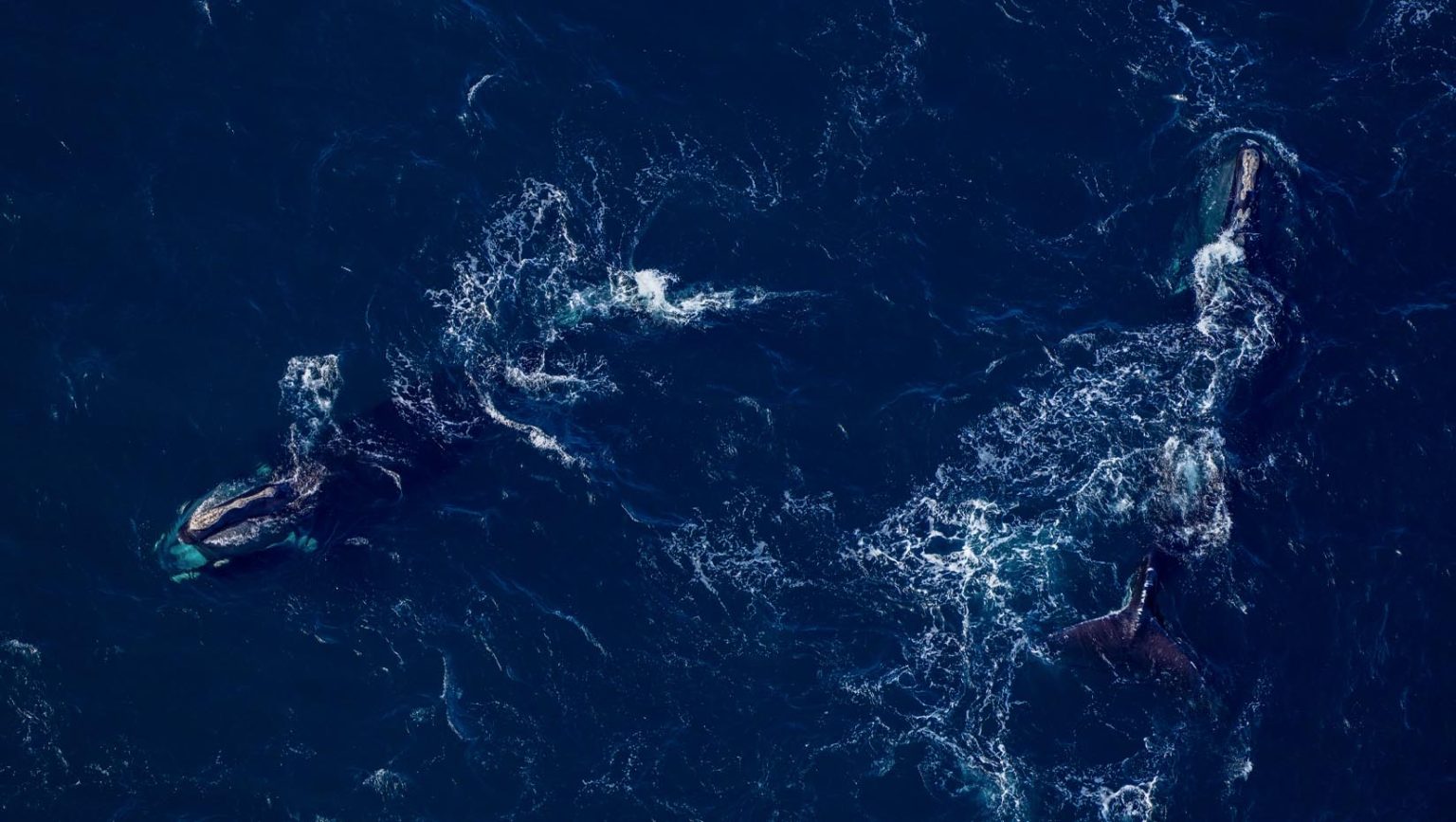
Right whale distribution models detailing prey can inform conservation efforts
Despite being one of the largest animals on the planet, the small population of the North Atlantic right whale and its vast habitat makes these marine mammals difficult to track. Models accurately detailing where they are located at different times of the year are essential for conservation.
A new study published in the journal Endangered Species Research highlighted the value of including detailed prey information in right whale models, which can improve their predictive power for management and conservation. The study was led by Camille Ross ‘25G, associate research scientist at the Anderson Cabot Center at the New England Aquarium, and co-authored by scientists from Bigelow Laboratory for Ocean Sciences and Damian Brady, professor of oceanography at the University of Maine.
Researchers outlined a modeling approach that more effectively predicts where right whales congregate at different times of the year by including information on the abundance of their favorite zooplankton prey species, calanus, while also taking into consideration the whales’ daily energy needs.
“Our novel approach accounts for the preferences and needs of a hungry whale, highlighting the importance of smaller species in the right whale diet,” said Ross, who graduated from UMaine with a PH.D in oceanography in May.
“You can’t protect whales if you don’t know where they are — and they go where the food is,” Brady added. “This study helps us map that more precisely than ever before.”
The study brought together experts on modeling, right whale physiology and zooplankton ecology from Bigelow Laboratory, UMaine’s Darling Marine Center, the Anderson Cabot Center, Duke University and the National Oceanic and Atmospheric Administration’s Northeast Fisheries Science Center.
Improving predictive tools with more direct, accurate information on prey will give scientists and managers a more holistic view of right whale habitat. Ross said predictive tools are essential for being proactive to potential shifts in right whale behavior as environmental conditions change.
“This paper is specifically focused on a right whale application, but this idea of interpolating zooplankton data from the perspective of the energetic requirements of the predator could be used across marine science,” said Ross. “There are other species, like larval lobster, that feed on calanus, and there’s no reason that our method couldn’t be extended to those species.”
Read the full story on Bigelow Laboratory’s website.
